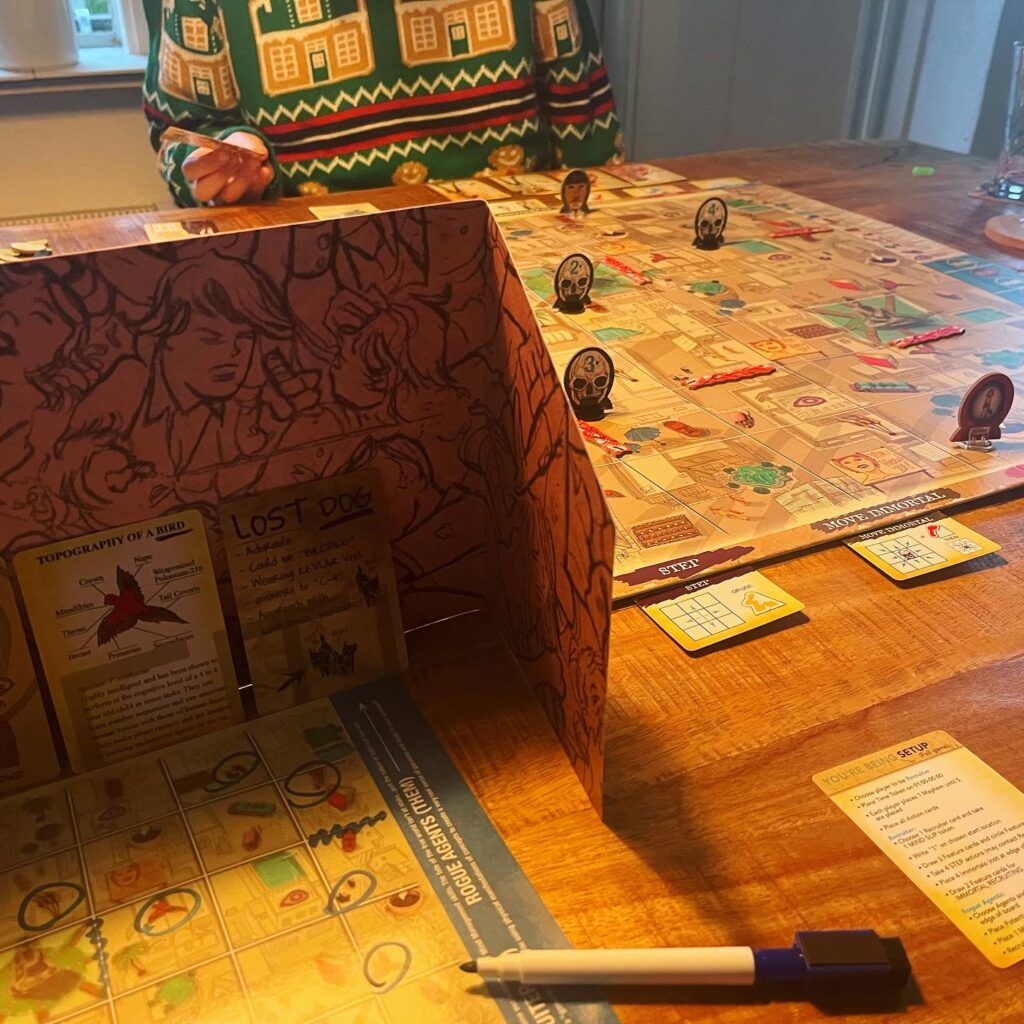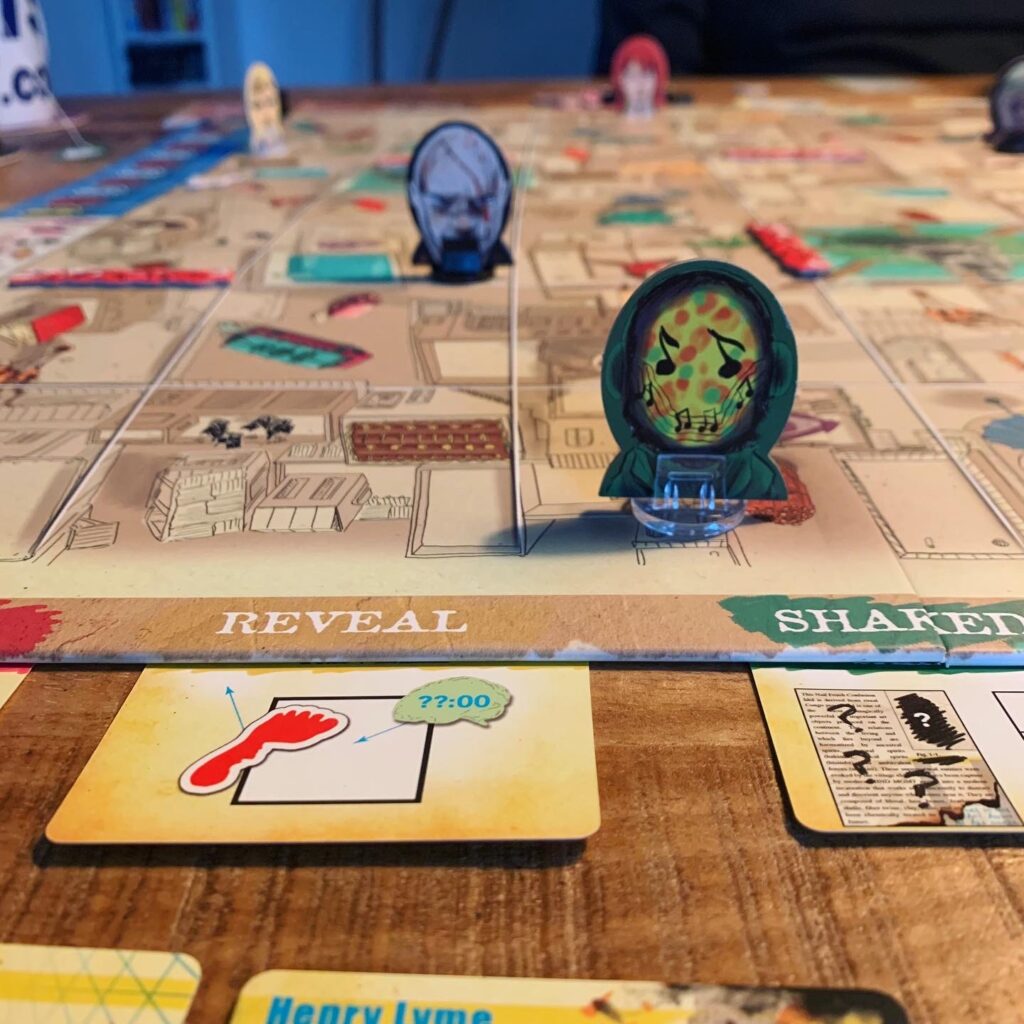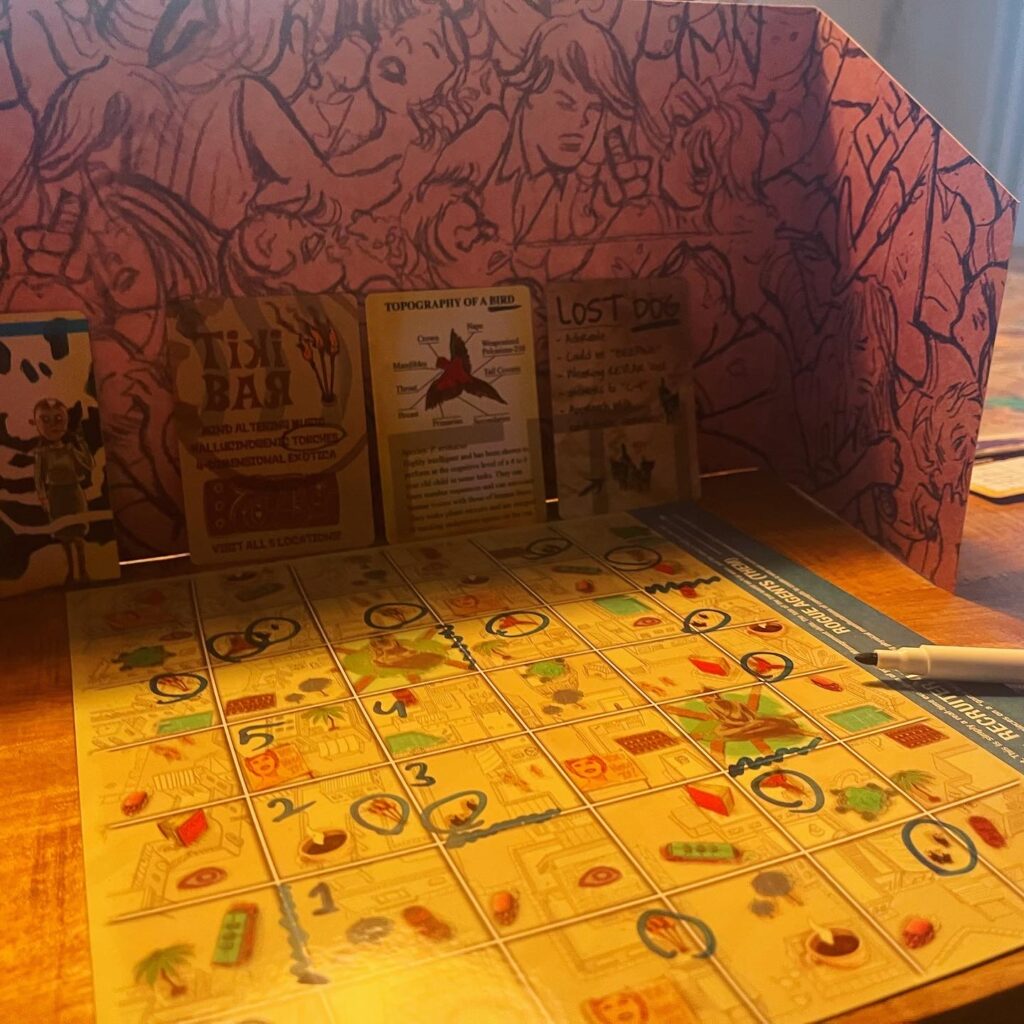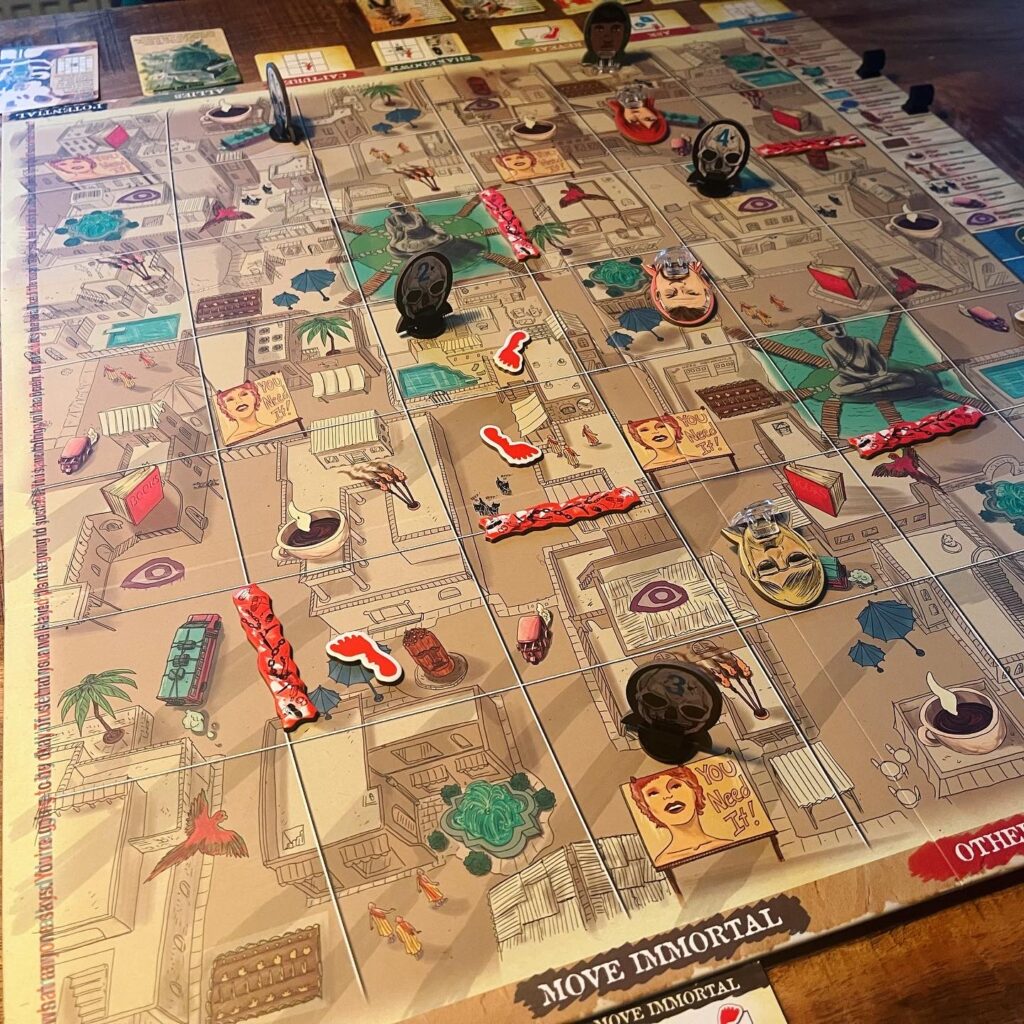Conspiracies, secret organisations and hidden information. The world comic series MIND MGMT, by Matt Kindt, and the game MIND MGMT: The Psychic Espionage “Game”, by Jay Cormier and Sen-Foong Lim, revolves around a secret agency full of paranormally gifted agent. Will you manage to unravel the secrets of the mysterious MIND MGMT?

Background
MIND MGMT is a comic book series, published by Dark Horse Comics, created by writer and cartoonist Matt Kindt. Matt Kindt may sound familiar to comic book fans as they may know him from Revolver, his drawings for Valiant Entertainment and perhaps you know him for penning the comic book series BRZRKR. In the comic series MIND MGMT, readers follow the story of true crime writer Meru, amongst others, who discovers a deep-rooted government conspiracy and secret agency during her research. You also follow a former agent of that very agency, Henry Lyme, who tries to expose his old employer. That secretive agency is MIND MGMT – once established after World War I as a spy agency to stop global catastrophes using agents with psychic powers.
Trust no one. The truth is out there. MIND MGMT was once created to serve humanity, but power corrupts even the noble. Compromised and corrupted, MIND MGMT now serves only their own nefarious purposes: world conquest. From the shadows, MIND MGMT maintains an iron grip on the world stage and to maintain that power and conspiracy, Mind MGMT deploys secret and psychic agents all over the world. MIND MGMT is also trying to “recruit” other psychics at all costs. It is up to Meru, Henry Lyme and others to stop this organisation.
Matt Kindt’s comic is largely inspired by alleged conspiracy theories, secret agencies and (thought) experiments involving the US government during the world wars and the Cold War. Consider, for instance, the MK-ULTRA project: a series of secret CIA experiments with the alleged aim of being able to control a person’s psyche. According to some, it even had the purpose of piercing the limitation of human ability or to induce psychic powers. These experiments allegedly included brainwashing, chemical interrogation methods and hypnosis. That sounds a bit like Stranger Things, doesn’t it?
Objective and setup
In MIND MGMT: The Psychic Espionage “Game”, one player assumes the role of a recruiter of MIND MGMT. This player must search the city, the game board, for new recruits. The recruiter secretly moves around the city and tries to find his or her recruits based on “characteristics”. To do so, MIND MGTM also enlists the help of so-called immortals, who help the player block renegade agents (the other player or players) and win extra souls. Based on limited information, the other players try to find the recruiter’s location. The renegade agents have until 16:00 to stop MIND MGTM. MIND MGMT wins if the clock strikes four in the afternoon or if they have found 12 recruits.
Are we being followed? Is this a setup? At the start of the game, players set up the game board. The recruiter is given a screen and a small version of the game board on which this player must take notes with whiteboard markers. The screen keeps information hidden from the other player(s). The recruiter gets three feature cards based on which this player will recruit. One player already makes 5 moves (more on this later) and can already win some souls as a result. On the board are mayhem tokens (a kind of mental barrier that prevents players from moving to certain adjacent squares), renegade agents and immortals. Next to the board are cards with different actions and special properties.


MIND MGMT uses a system that allows players to add campaign-based modules to the game: the SHIFT system. If players play multiple sessions with the same group, they can apply the SHIFT system. The losing side gets to open one of the SHIFT packets. This adds a module that this side can use in subsequent games to be a bit stronger in their ways. The SHIFT system is not a Legacy system or a story driven campaign, but an opportunity to vary and balance the game. Based on this system, setup of a game of MIND MGMT can vary.
Gameplay
During a game, the recruiter takes a turn, then two agents, then the recruiter again and then the two remaining agents. The recruiter tries to find recruits. Where in the city these recruits are located depends on characteristics. At the beginning of the game, the recruiter has three hidden feature cards. These are pictures that are also on the game board and the secret card. The recruiter circles these features and thus knows which squares to move to. The recruiter moves forward on a secret card and thus tries to visit the locations that correspond to the three randomly drawn cards. They can also use their four Immortals to protect locations from agents or collect additional recruits. There are always two feature cards face-up. If there are two Immortals on these features, the recruiter also gets an additional recruit. The agents now know, though, which traits the player is not looking for himself….
All other players control the renegade agents. During a turn, an agent may move two squares, and take an action. Most actions allow the agents to ask questions to the recruiter. Based on the answers given by the recruiter, players try to decipher what the recruiter has been up to and where it might move to in the hope of catching it in its collar. Agents can use “mental notes” to keep track of all the information they receive.
Verdict
There is a lot of media about alleged government conspiracies, and paranoia is an oft-repeated element. Matt Kindt’s comic and artwork manages to capture this feeling perfectly in the comic. MIND MGMT: The Psychic Espionage “Game” is a hidden movement game based on the comics of the same name and embraces that sense of paranoia. The theme, with an agency operating in secret, fits perfectly with the gameplay of this hidden movement game. This has of course already been proven by the likes of Scotland Yard and Letters from Whitechapel, where players try to escape from the law by moving across numerical fields, but MIND MGMT perfects the hidden movement gameplay and throws a hefty helping of thematic sauce over it.
Matt Kindt’s artwork is perfect for the theme. The artwork was once, unfairly in my opinion, a point of criticism of the comic book series, but the drawings perfectly match the mysterious and paranoid. There are many different secrets hidden in the different game elements as well as the artwork. If you manage to solve these meta-riddles, you might unlock new game elements. Speaking of new game elements, the SHIFT system introduces a nice variety of game elements that players can add to subsequent sessions of MIND MGMT and at the same time, it is a method to balance game sessions and compensate the weaker side.



Players first have to immerse themselves a bit in Matt Kindt’s world to grasp different terminology, but after that an innovative and intuitive gameplay follows. The gameplay and players’ different actions are clear. The lack of information is exciting for both sides. The recruiter does not want to be caught, but sometimes has to take risks and leak information to win recruits. The renegade agents are in the dark and therefore have to ask the right questions. The longer the game goes on, the more exciting it becomes. The agents have more and more information, but the clock is ticking while the recruiter is cornered. All these elements together make MIND MGMT the best hidden movement game you can currently find on store shelves.




